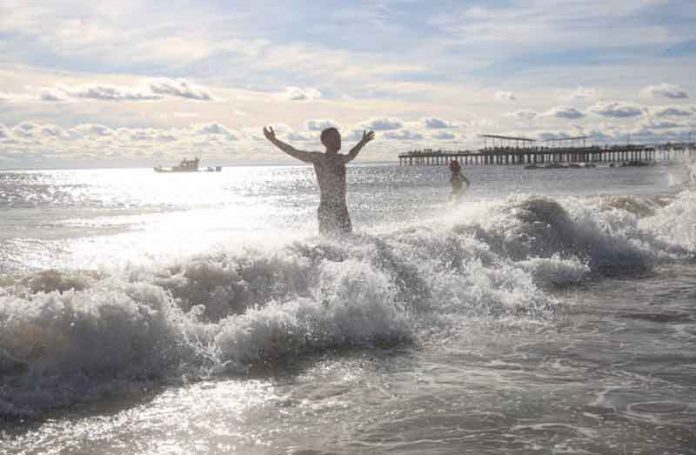Not surprisingly, the current pandemic continues to dominate the international news cycle. And while Canada has far fewer confirmed cases of COVID-19 than the United States does, it’s worth mentioning that anything citizens can do to flatten the curve will prove essential until an effective vaccine is developed.
But given how fatigued many of us are by the need to quarantine and how tempted we might be by the nicer weather, the question remains: how risky are the social activities we love and the services we typically rely on? Although it’s best not to take any undue risks in order to protect the health of yourself, your loved ones, and others in your community, it may be worth noting that some situations are inherently more prone to risks than others. Here’s the latest information that can help you make better decisions.
Working in an Office
Although employees who work in clean offices have an 80% reduced probability of catching a common cold and the flu, office workers may have a heightened risk of contracting the highly contagious coronavirus once they eschew remote work and return to the job site. According to Business Insider, COVID-19 spreads primarily indoors; the more time you spend near someone with the virus, the more likely it will be for you to become infected. In poorly ventilated buildings or enclosed spaces (like elevators), the risk becomes even higher. As a result, employers may need to adapt and embrace concepts like staggered shifts, 24/7 operations, or enforced flextime if they’re unable to work totally remotely.
As it stands, businesses operating in office buildings will likely need to meet a number of mandated standards in order to safely reopen. But even if COVID isn’t a direct concern, there could be other risks associated with reopening — particularly if your offices have remained closed for months. Legionnaires’ disease could be a possible worry, as stagnant water can carry the bacteria that cause this health condition; since water may not have been flowing for a prolonged period, it’s possible that this health risk could complicate the reopening process.
Ultimately, the risk of transmission depends on how many people are in your office and the precautions taken by your employer. With so many variables at play, it’s tough to say — but following guidelines and reducing your risk of contraction in every way possible (including the continuation of remote work) will certainly have an effect.
Sending Your Child to Daycare
As workplaces start to reopen, parents are understandably wondering how to safely care for their children. Around 30% of three- and four-year-olds in the U.S. are enrolled in private preschools and childcare centers. And while schools remain closed for now, many daycare centers have been operating all along as essential businesses. But many parents have kept their kids home until now. Although COVID-19 initially didn’t seem to be impacting young children as seriously as some adults, recent inflammatory syndromes have shown that the effects of the coronavirus are still largely unknown. However, families may need to rely on these services as they go back to work — but is it safe?
Part of the problem, experts say, is that young children can’t be expected to engage in social distancing in the same ways that older kids or teenagers can. And since masks should not be worn by children under the age of two, protecting toddlers from infection may be easier said than done. Officials say that testing and monitoring are the best ways to stay safe, as is frequent hand-washing, separation of classes and staff members, and frequent disinfection of shared surfaces. Parents should inquire with their daycare facility about their COVID-19 infection plan and make sure that staff members and children are required to stay home if they show signs of illness. And if you have vulnerable family members at home or you’re at risk for infection, you might want to think twice about sending your child to daycare for the time being.
Attending a Backyard Cookout
It’s no surprise that many of us are starved for social interaction and want to enjoy a grilled meal outdoors with a couple of friends. While it’s not the most responsible choice, attending a backyard gathering with one other family may not be the riskiest thing you can do — providing that you not share food, drinks, or utensils. If both families bring all of their own supplies and both families continue to practice social distancing, the risk will be relatively low. A masked activity would reduce the risk, but it’s unrealistic to engage in eating and drinking with a mask on. Keep in mind that if you offer bathroom access, the transmission risk will increase. If you do allow guests into your home, make sure to frequently disinfect touched surfaces before and after use.
Swimming At a Public Beach or Pool
Swimming is the fourth most popular activity in the United States, so it makes sense that both Americans and Canadians alike would want to participate in it. Of course, having a privately owned residential pool is the best way to enjoy the water. But what about a neighbourhood or public pool — or a beach, for that matter?
News stories showing crowded beaches have shown the dark side of public swimming, but the activity itself comes with lower risk if social distancing is followed. The water will dilute the virus, meaning that transmission via water is pretty unlikely. Entry points and public bathrooms are riskier spots, as is anywhere you cannot maintain six feet of distance from others. Many community pools have started requiring reservations and have limited the number of guests allowed and some public beaches have marked off spots for people to stake out their space. Going to these locations in the early morning or late afternoon can reduce the risk of finding a big crowd. It may not necessarily be a great idea to partake in these activities if you have young children since they tend to be vectors for the virus, but if you and your partner want to relax on the sand and can do so responsibly, it might not be as bad an idea as you think.
Whether you’re looking to engage in a leisure activity or you’re worried about the logistics of returning to work, knowing the risks you could face can prove vital. Although it would be ideal if everyone refrained from undue risks, that simply isn’t the reality we’re faced with. But by following proper health guidelines and using an excess of caution, we may be able to enjoy a bit more normalcy in the weeks to come.







